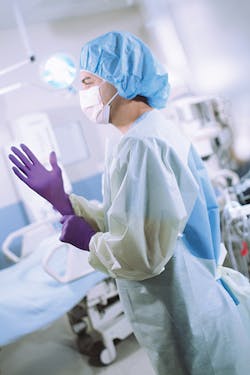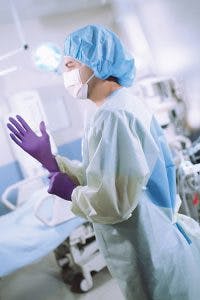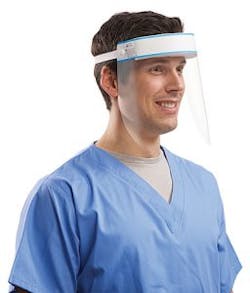In the public mind, fed by disaster movies and paperback techno-thrillers I suppose, the idea of dangerous “lab accidents” is probably still most associated with research labs—and indeed, the possibility of contamination by infectious agents involved in research is a continuous concern for leaders of such labs. But clinical lab directors have always known that the issue is highly relevant to their operations as well. It has ever been thus, even before Ebola and Zika, even before HIV. Laboratorians have always needed to take precautions against being exposed to dangerous organisms via the serum samples they collect and analyze.
Despite all of those efforts, each year hundreds of accidents occur in laboratories across the world. It would be wrong to say that all incidents can be prevented if proper precautions are taken. However, implementing appropriate safety measures and adhering to a well-structured personal protective equipment (PPE) program can reduce exposures to infectious material and improve overall safety conditions in clinical laboratories.
No laboratory is immune to the risk of an accident occurring. In clinical laboratories, laboratory-acquired infections (LAIs) are a particularly significant concern. LAIs can happen as a result of inhalation or ingestion, percutaneous inoculation, and direct contact with samples or with contaminated surfaces—all of which can be minimized through the use of proper PPE.
Components of an effective program
An effective PPE program takes into account the following considerations: compliance with standards, appropriate types of protection to address potential hazards, the comfort and fit of each (wearable) item, quality of products, convenience and ease of ordering the necessary equipment, proper training procedures for wearers, and long-term effectiveness of the program.
In order to best assess the types of protection a PPE program should provide, a thorough analysis of the potential hazards should be performed. Additionally, it is important to review and adhere to the safety requirements provided by regulatory agencies and documentation, such as the Occupational Safety & Health Administration (OSHA) and Clinical Laboratory Improvement Amendments (CLIA). The insight and conclusions drawn from this research will contribute to determining the specific items appropriate for inclusion in the program, such as lab coats, masks, gloves, and safety goggles.
An essential component of PPE that should not be overlooked is the fit and feel of each product. This is especially important because PPE that fits poorly can contribute to additional safety hazards. Uncomfortable or ill-fitting protective clothing can become neglected, unused protection that wearers opt to alter or forgo. Even rolling up the sleeves of a lab coat or temporarily removing a mask can have significant safety consequences, so it is essential for PPE to be comfortable enough that it is worn properly. Additionally, PPE that doesn’t fit well can contribute additional safety hazards to the lab environment. For instance, a lab coat that is too large can easily get caught on or dragged through something, increasing the likelihood of spills, trips, and falls. To ensure the proper fit, PPE that is available in multiple sizes or styles should be assigned and fitted on an individual basis.
Implementation and training
It is also necessary for PPE programs to be built with implementation and long-term effectiveness in mind. Programs must be developed to facilitate consistency and longevity, while providing staff—both new employees and veterans—the opportunity to be properly and efficiently trained. Training procedures should be established to properly implement the program and ensure that each individual understands the importance of PPE, as well as how to use it correctly. A variety of training resources can be made available. Examples include video tutorials, pamphlets and brochures, and hands-on practice with various protective products. Ongoing, regularly scheduled meetings and training sessions can also be very beneficial in reinforcing the importance and proper use of PPE.
To provide long-lasting PPE, laboratories need to prioritize investing in high-quality items that are built for durability and guaranteed to retain their protective qualities over time. Inspections should be conducted regularly to assess damage and authorize repairs or replacements as needed.
One game-changing factor in the landscape of PPE programs is the ever-evolving technology that many laboratories are starting to utilize for implementation. For example, the option to work with PPE suppliers to develop customized online stores has streamlined and simplified the ordering process, creating a convenience not associated with PPE program implementation in the past. The stores can be populated with preselected products that meet each organization’s specific preferences and safety requirements. This technology also allows flexibility and fast turnaround in response to ongoing needs and changes, allowing lab leaders to update equipment as needed.
A culture of safety
A laboratory accident can happen in an instant, but the effects may last forever. PPE programs are an important component in laboratory safety that—when properly developed and implemented—help prevent unnecessary tragedies. The effectiveness of a PPE program can be optimized through a thorough hazard assessment, compliance with all applicable regulations, prioritization of comfort and fit, and consideration of long-term sustainability. With a responsible PPE program in place, laboratory administrators are helping to create an environment that fosters efficiency as well as optimal patient care.
John Ross is president and CEO of Mission Linen Supply, a single-source provider of rental and direct-sale uniforms, linens, and other essentials for laboratories, industrial businesses, corporations, and the healthcare and hospitality industries. With more than 16 years of experience in uniform program implementation and workplace health and safety, John’s expertise helps ensure the success of PPE programs that Mission develops.



